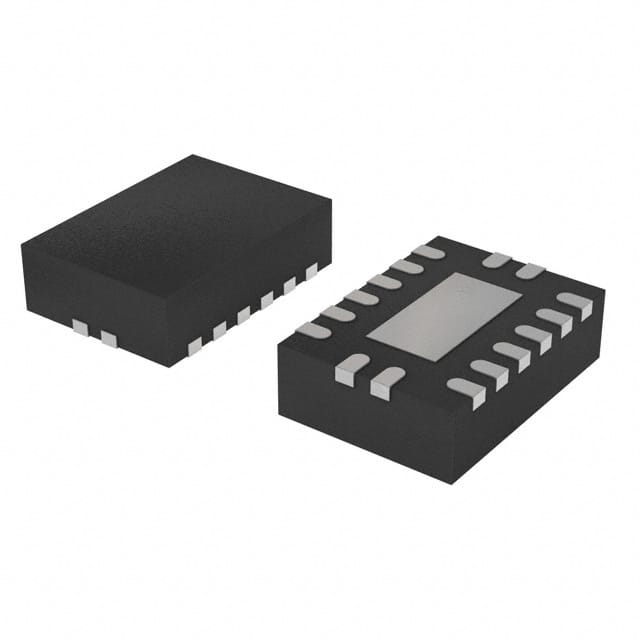Szczegóły produktu można znaleźć w specyfikacjach.

Encyclopedia Entry: 74HCT423BQ,115
Product Overview
Category
The 74HCT423BQ,115 belongs to the category of integrated circuits (ICs). Specifically, it falls under the category of digital logic ICs.
Use
This integrated circuit is commonly used in various electronic devices and systems for performing digital logic functions. It is particularly useful in applications that require precise timing and control.
Characteristics
- High-speed operation: The 74HCT423BQ,115 is designed to operate at high speeds, making it suitable for time-critical applications.
- Low power consumption: This IC is known for its low power consumption, making it energy-efficient.
- Wide voltage range: It can operate within a wide voltage range, typically between 2V and 6V.
- Schmitt-trigger inputs: The IC features Schmitt-trigger inputs, which provide hysteresis and improve noise immunity.
Package and Quantity
The 74HCT423BQ,115 is available in a small-outline package (SOIC) with 16 pins. It is typically sold in reels or tubes containing multiple units.
Essence
The essence of the 74HCT423BQ,115 lies in its ability to perform complex digital logic operations accurately and efficiently. It combines high-speed operation, low power consumption, and wide voltage range to meet the requirements of modern electronic systems.
Specifications
- Supply Voltage Range: 2V to 6V
- Input Voltage Range: 0V to VCC
- Output Voltage Range: 0V to VCC
- Operating Temperature Range: -40°C to +125°C
- Logic Family: HCT
- Number of Pins: 16
- Package Type: SOIC
Detailed Pin Configuration
The 74HCT423BQ,115 has 16 pins arranged as follows:
- Pin 1: Output Q1
- Pin 2: Input B1
- Pin 3: Input A1
- Pin 4: GND (Ground)
- Pin 5: Input CLR
- Pin 6: Input CLK
- Pin 7: Output Q2
- Pin 8: Input B2
- Pin 9: Input A2
- Pin 10: VCC (Supply Voltage)
- Pin 11: Output Q3
- Pin 12: Input B3
- Pin 13: Input A3
- Pin 14: GND (Ground)
- Pin 15: Output Q4
- Pin 16: Input B4
Functional Features
The 74HCT423BQ,115 offers the following functional features:
- Quad D-type flip-flop: It consists of four independent D-type flip-flops, each with its own clock input and asynchronous clear input.
- Edge-triggered operation: The flip-flops are triggered on the rising edge of the clock signal, allowing precise control over the timing of operations.
- Asynchronous clear input: The clear input allows for immediate resetting of the flip-flops to a known state.
- Schmitt-trigger inputs: The Schmitt-trigger inputs provide improved noise immunity and allow for reliable operation in noisy environments.
Advantages and Disadvantages
Advantages
- High-speed operation enables efficient processing of digital signals.
- Low power consumption makes it suitable for battery-powered devices.
- Wide voltage range allows for compatibility with various systems.
- Schmitt-trigger inputs enhance noise immunity and reliability.
Disadvantages
- Limited number of flip-flops (four in total).
- Requires external components for complete functionality in certain applications.
Working Principles
The 74HCT423BQ,115 operates based on the principles of digital logic. It utilizes D-type flip-flops to store and manipulate binary information. The clock input triggers the flip-flops, causing them to either store or update their output based on the input data. The asynchronous clear input allows for immediate resetting of the flip-flops to a known state.
Detailed Application Field Plans
The 74HCT423BQ,115 finds applications in various fields, including:
- Communication systems: Used for signal processing and synchronization.
- Industrial automation: Employed in control systems and timing circuits.
- Consumer electronics: Integrated into devices requiring precise timing, such as digital clocks and timers.
- Automotive electronics: Utilized in vehicle control units and instrumentation panels.
- Medical equipment: Incorporated in devices that require accurate timing and control.
Detailed and Complete Alternative Models
There are several alternative models available that offer similar functionality to the 74HCT423BQ,115. Some notable alternatives include:
- 74HC423: Similar to the 74HCT423BQ,115 but operates at a higher voltage range (
Wymień 10 typowych pytań i odpowiedzi związanych z zastosowaniem 74HCT423BQ,115 w rozwiązaniach technicznych
Sure! Here are 10 common questions and answers related to the application of 74HCT423BQ,115 in technical solutions:
Question: What is the function of the 74HCT423BQ,115?
Answer: The 74HCT423BQ,115 is a dual retriggerable monostable multivibrator used for timing and delay applications.Question: What is the operating voltage range of the 74HCT423BQ,115?
Answer: The operating voltage range is typically between 4.5V and 5.5V.Question: How many inputs does the 74HCT423BQ,115 have?
Answer: It has two inputs, A and B.Question: What is the maximum output current of the 74HCT423BQ,115?
Answer: The maximum output current is typically 4mA.Question: Can the 74HCT423BQ,115 be used as a frequency divider?
Answer: Yes, it can be used as a frequency divider by connecting the output to the input.Question: What is the typical propagation delay of the 74HCT423BQ,115?
Answer: The typical propagation delay is around 20ns.Question: Can the 74HCT423BQ,115 operate in both astable and monostable modes?
Answer: No, it can only operate in monostable mode.Question: What is the power dissipation of the 74HCT423BQ,115?
Answer: The power dissipation is typically 500mW.Question: Is the 74HCT423BQ,115 compatible with TTL logic levels?
Answer: Yes, it is compatible with both TTL and CMOS logic levels.Question: Can the 74HCT423BQ,115 be used in automotive applications?
Answer: Yes, it is suitable for automotive applications due to its wide operating voltage range and robustness.
Please note that these answers are general and may vary depending on the specific datasheet and application requirements.

